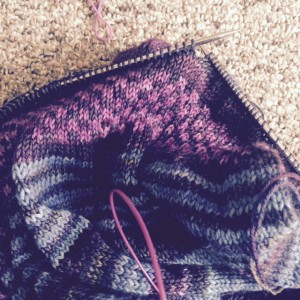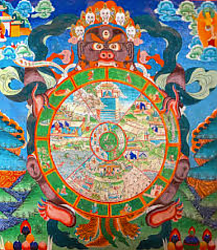Knitting and Sitting–Practices of Paying Attention
by Trina Magi (with Phil Lavigne)
I recently talked with Phil Lavigne, a member of the Burlington Shambhala Center and a meditator for about four years, about knitting.
How long have you been a knitter, and how did you learn?
I’ve been knitting since I was about 11 years old. I had rheumatic fever and I was put on bed rest, and my mother had trouble keeping me resting. So she taught me how to sew and do embroidery and how to knit. Although I don’t have a lot of time to knit because I do so many other things, I always come back to it.
Why do you knit?
Our culture today is very busy in a big way—everything’s going so fast. Knitting slows you down, because you can only knit one stitch at a time. And I like doing things with my hands.
How is knitting like sitting practice?
Both are quiet, silent activities, and they provide exercise in patience and focus. In knitting, you really have to pay attention or you make mistakes and then you have to go back, take rows apart, and redo them. You learn things from that—mostly what you learn is that you weren’t paying attention. Meditation is like putting the needle into that empty space. When we meditate, we focus on letting go, one thought at a time. In knitting the same thing happens. It’s letting go of each stitch, one at a time, and then doing the next one. Things slow down and you’re in the moment. Which is good practice for life.






